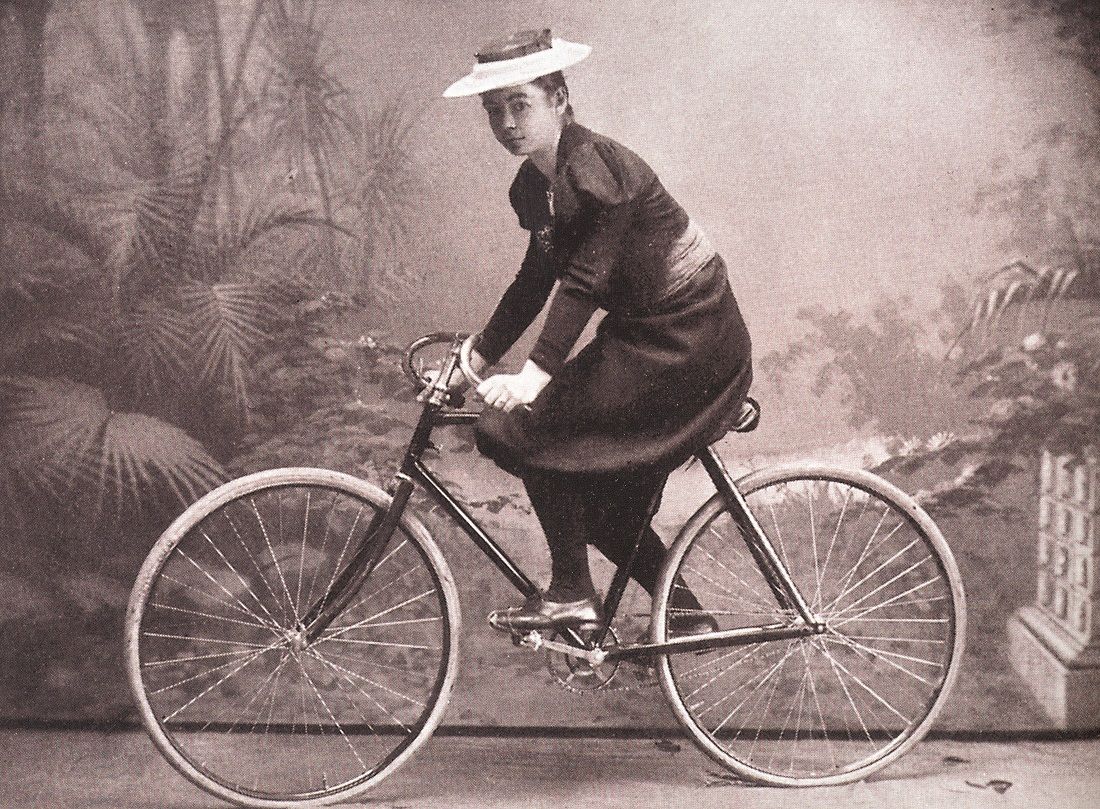We are so accustomed to the sight of female cyclists paying no particular attention to whether they are wearing cycle shorts or stilettos, power-dressed or in the full bloom of pregnancy, that the notion of bike riding being inappropriate and even dangerous for women, either physically or mentally, seems utterly absurd.
But at the end of the 19th century, the prevailing philosophy was that women ought to be kept away from the bicycle as well as the racetrack, as much for their own good as for their husbands’.
45 kilos of stamina
And yet Charles Hansen not only tolerated his fiancee’s desire to be a great cyclist, he actively supported it, sponsoring her on the ride which was to get her into the history books. In 1897, the future Mrs Hansen broke the world record for riding 1,000 kilometres, a feat she accomplished in just 54 hours and 18 minutes.
After marrying two years later, Lindberg disproved all those who claimed that cycling was damaging to a woman’s reproductive potential: she bore no less than seven children.
The sheer stamina she must have required, not only to raise seven children but also to have set a world record in long distance cycling, appears even more admirable in light of the fact that she weighed just 45 kilos.
High-born
Lindberg was born in 1871 in Copenhagen into an educated family with connections to the famous NFS Grundtvig, the religious founder of Denmark’s egalitarian folkehøjskole education system.
She trained as a painter, but by the spring of 1895 was determined to break the mould of cycling as a male domain, sneaking into the training class of the Danish Bicycle Club.
This act of rebellion was followed by her participation in the club’s own Star Race, in which she quite unexpectedly came fifth out of 25 entrants.
Racing like a man
Over the following two years, she competed in all of the available races on equal footing with her male counterparts. Among the competitions she entered was the strangely titled Esbjerg race (strange in that it began and ended in Copenhagen).
It was a race that many participants regularly found hard to even complete – in 1895, just six of the 34 competitors managed to make it to the finishing line at all.
Lindberg was one of those forced to retire from the competition early that year, but she was vindicated two years later when she came in 17th out of 27.
Across the roads of Zealand
But it was for her performance in 1897 that Lindberg will be remembered. The feat required more than two full days of cycling across the roads of Zealand to cover the total distance of 1,000 kilometres, with a team of 25 cyclists pacing her throughout the journey.
The ride was financed by her fiancé, who paid for overnight accommodation for the team at Damhus Inn in Rødovre, west of Copenhagen.
Hansen, spokesmen for physical education, was one of the foremost cyclists and in the country and an extremely well respected man.
There was no doubt after the ride that the Hansen/Lindberg team were not to be taken lightly.
Richer in heritage than in love
With the cycling about to take over our city, we ought to take pause to reflect on the achievements of Susanne Lindberg, whose effort moved not just bicycle wheels, but also the progression of the women’s movement well into the next century.
One can almost picture Mrs Hansen, smiling with her husband, twin daughters and five sons, on tandem bicycles and wearing the foremost cycling fashion of the day.
Despite their endurance in the saddle, the Hansens’ marriage proved a little less long-lasting.
Their marriage was annulled in 1930, when husband and wife were 60 and 59-years-old respectively, and just four years before Lindberg’s death.
















